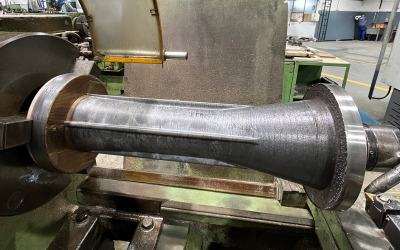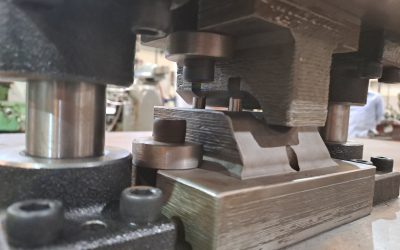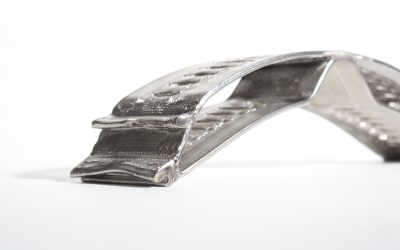Tired of sifting through endless options to find the best materials for your projects? Look no further! Our definitive materials guide breaks down everything you need to know to choose the right materials and ensure your parts achieve exceptional results.
Read until the end to discover how Meltio makes it even easier for you by offering the Meltio materials already parameterized, with the best mechanical properties guaranteed in every print. Plus, you’ll find the Printable Materials list!
What is a material?
First, it is worth defining the concept of ‘material’, which could be summarized as any material that has a useful purpose and can be used for manufacturing. However, this is a broad definition in which we could make a series of clarifications and nuances. According to the dictionary definition, a material would be an element or combination of elements, generally in a solid state used to cover specific needs.
This definition is not far removed, but if we go to the strict sense of the word, a material could be defined as one whose characteristics and behavior are not due solely to the sum of the properties of the individual elements from which it is composed. The way the elements are structured into macroscopic bodies (i.e. their particles), the treatment processes during processing or the physicochemical interaction of the individual elements have a significant influence on the determination of the final properties of a material.
It could therefore be argued that the properties and behaviour of a material are essentially due to two factors: its constitution and its structure. For example, steel is a material composed mainly of iron and carbon, however, its properties, such as strength and malleability, are not simply the sum of the properties of iron and carbon separately.
Materials can be classified into several groups, but in a simplified way, we’ll focus on metallic materials as this is the raw material used in Meltio technology.
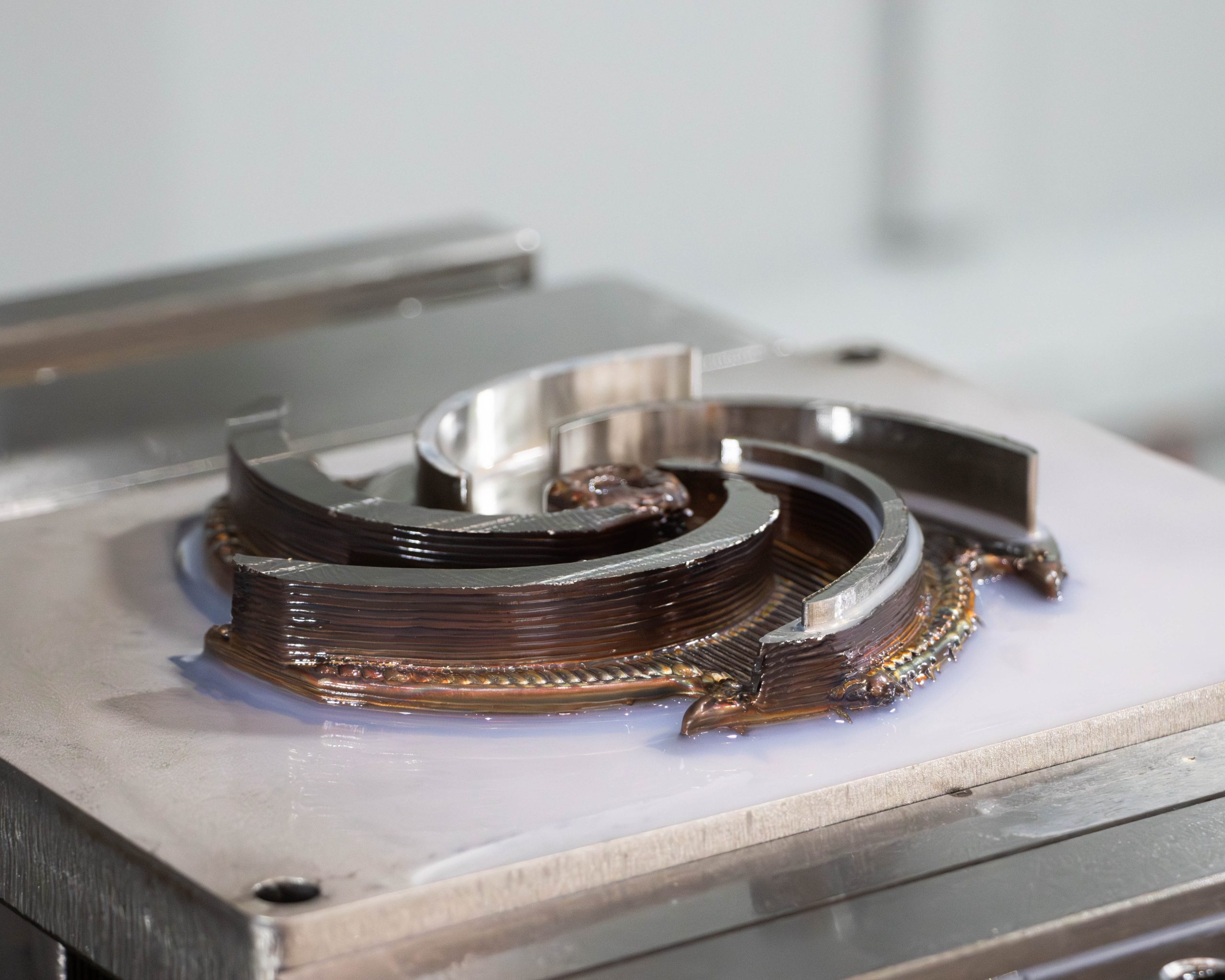
Metallic materials and their characteristics
Metallic materials are defined as metals or metallic alloys that include mechanical, physical, chemical, thermal and electrical properties. The properties that make metal materials unique are as follows:
- Durability and corrosion resistance: Corrosion causes damage to some metals and even destroys their functionality when exposed to corrosive environments such as humidity or high temperatures. Corrosion-resistant alloys are especially crucial for certain industries, such as maritime, aerospace and automotive.
- Ductility and malleability: they can be moulded and stretched into sheets without breaking, which facilitates the creation of different shapes and applications.
- High melting point: Because they have high melting points, they are resistant to very high temperatures and allow the creation of applications that can withstand adverse environmental conditions. This is something to keep in mind when looking for applications that can withstand high temperatures, such as those destined for sectors like aeronautics.
- Mechanical resistance: they are resistant to great stresses, given that they allow the application of forces or loads in the internal tensions of the structures. That is to say, the capacity to resist fatigue when applying traction, compression, torsion or bending, resulting in deformation but without causing any type of breakage.
In short, metallic materials have properties highly valued in the industrial sector.

One step further: Alloys
However, to further improve these properties, it is usual to combine different metals in various proportions, forming what are known as ‘alloys’. Alloys are the mixing of a parent metal with other elements to improve physical and mechanical properties, which provides significant improvements compared to a pure metal.
By varying the composition of alloys, a wide variety of properties can be obtained, allowing the creation of applications, each suitable to meet the needs of a variety of industries.
Based on the above, material will be defined as a systematically engineered element designed with specific characteristics to fulfil any identified function.
Given the excellent physical and mechanical properties of metallic materials, these are used in countless industries to produce various applications for sectors, such as aeronautics, defence, automotive, industrial maintenance, maritime, and aeronautics, among others.
As an open platform, Meltio supports the use of third-party materials and our disruptive process is compatible with a wide range of materials, from stainless and mild steels to titanium alloys, nickel, invar, cobalt-chromium and precious metals such as gold.
However, at Meltio we strive to allow our customers to make use of our own range of materials, which are subject to constant testing and development. The reason for this is that at Meltio we want to provide the best user experience in 3D printing with Meltio technology, which involves continually improving the properties of existing materials, as well as introducing new materials that have been meticulously tested and configured, with printing profiles optimised by our experts.
Take titanium as an example, a material widely used in manufacturing and has specific attractive properties in many fields of application, including fields such as medicine due to its high corrosion resistance, excellent mechanical properties, biocompatibility and osseointegration. Aware of the characteristics of titanium, Meltio developed and validated Meltio Titanium 64, intending to obtain optimised impression parameters that would guarantee the best mechanical properties. We have obtained excellent results in customer projects with these materials, including the work carried out by the AIDIMME technology research centre with the Titanium 64 supplied by Meltio, currently in the process of validation for use in biomedical implants.
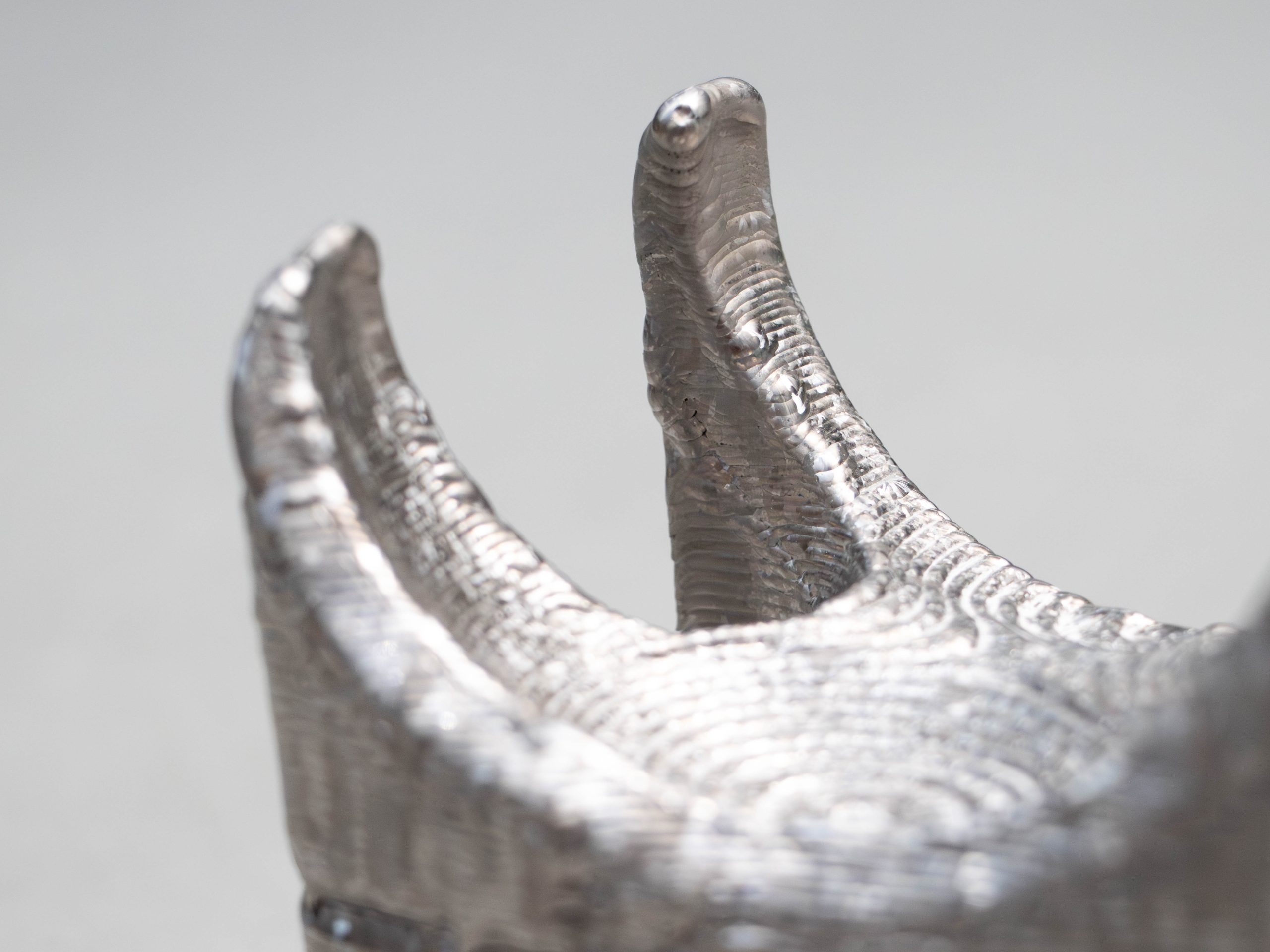
The alloys that Meltio obtains are the result of three different stages that involve exhaustive controls to guarantee the quality of the materials. The first objective in the process of developing a material is to obtain a good density, which subsequently leads to good mechanical properties.
The characterisation of a new material in 3D printing begins with the analysis of the dimensions and shape of the printing beads, which form the basis of all parts. Next, the overlapping of beads is examined to create a layer known as ‘cladding’. Phase 0 starts this process by printing square-shaped weld beads through various energy densities, along with a single bead overlay.
In phase 1 characterisation, a selection of phase 0 parameters is made to find those with the best energy density in the process. Samples are constructed using a simple geometry from which a by-product is extracted for defect analysis tests such as X-ray tomography. This is used for classifying the different energy density bands, these samples must be able to show high densification of the printed parts. This information allows users to select the most efficient process to achieve material quality using Meltio equipment.
Once the process window is found, samples are manufactured for mechanical characterisation. In this second phase, various tensile and hardness tests are carried out, as well as a study of the heat treatments required to guarantee the best performance of the manufactured parts.
In the final stage, known as Phase 3, an exhaustive study of the dynamic properties of the alloy is carried out. Various tests are carried out, such as fatigue tests, impact tests and machinability evaluations.
Therefore, by way of a summary of this process of searching for the best properties for our materials, it is developed as follows:
- Phase 1 of this material characterisation consists of making 5 to 10 prismatic specimens using the parameters identified in phase 0. These specimens are subjected to further analysis, focusing mainly on density, metallography and chemical analysis to detect any undesirable compounds.
- Phase 2 involves machining a series of prismatic specimens to extract cylindrical tensile specimens. This phase may include up to 3 candidates from the previous phase, considering heat treatments if necessary.
- The final phase, Phase 3, mainly selects an energy density for an in-depth study of the properties of the alloy. Various tests such as fatigue, impact and machinability evaluations are proposed.
Once all the phases have been completed, Meltio ensures that the parameters of the selected material are suitable for the entire service life of the manufactured part.
Manufacture of metal parts
In terms of traditional methods of manufacturing metal parts, there are three main manufacturing processes: subtractive manufacturing, manufacturing by deformation and additive manufacturing (previously known as manufacturing by material increment).
With subtractive manufacturing, the geometry of the part is obtained by removing a block of material. Machining is one of the main subtractive manufacturing techniques and involves using cutting tools, such as lathes or milling machines to remove material and obtain the desired shape. This process is widely used in industry to produce a variety of components, from small parts to large structures.
Metal forming involves changing the shape of a material without removing significant material. Instead of removing material by cutting, as in machining, this process uses applied forces to shape the material. An example of this technique would be forging, where the material is shaped by the controlled application of heat and pressure, using tools such as hammers, presses or rollers to acquire the desired shape.
Additive manufacturing allows the production of metal objects in 3D and is carried out by extruding material layer by layer until the desired shape is finally achieved. Additive manufacturing is now one of the hot topics of the moment in manufacturing. Meltio belongs to this group.
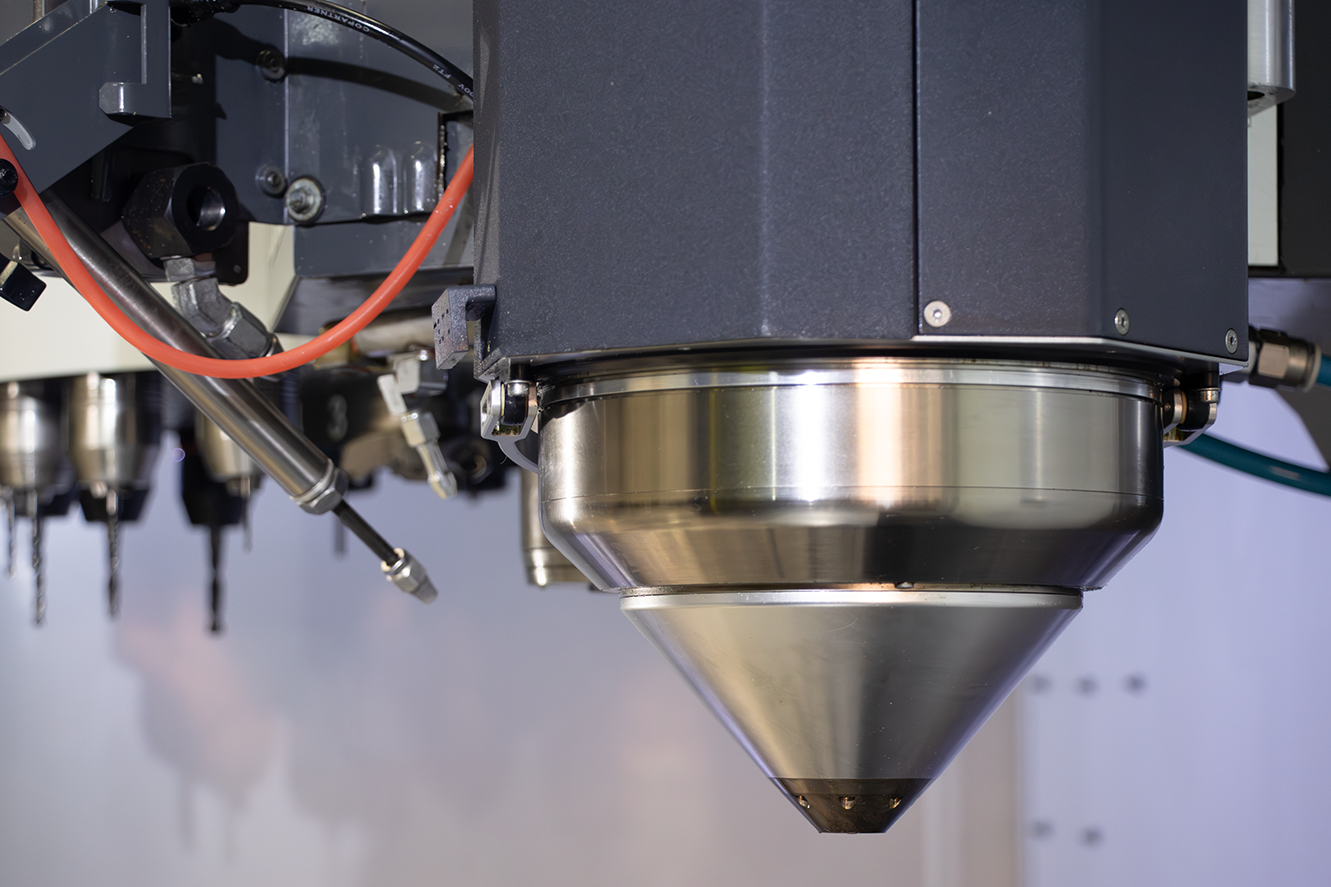
As far as the production process using 3D printing or additive manufacturing, it is very different from the two other manufacturing models mentioned above.
In additive manufacturing, we need to have a 3D model which can only be obtained using CAD software. The next step would be to convert the CAD model into a machine-readable file, in this case, it would be standard.STL format. This format represents a triangular mesh of the CAD file. It is important to note that the higher the density of the triangles in the mesh, the higher the resolution and therefore the better the final result.
However, this also means an increase in processing time and possibly manufacturing time. It is therefore essential to adjust the parameters according to the specific needs and desired functionality of the part. The part is then manufactured using a slicer or cutting tool, which will also allow all the parameters such as part tolerances, layers, power, print speed, infill, supports, and many others necessary to successfully print the part to be modified. Once the parameters have been selected, we will obtain data such as the manufacturing time of the part and the amount of material used.
It is important, however, to have a good knowledge of the characteristics of the material used when printing the part and to select the parameters correctly, as this will avoid possible problems derived from the printing process, such as defects in the final finish of the part. Normally, once we have the finished part, it is necessary to carry out some kind of post-processing such as final machining.
Meltio’s AM way: Directed Energy Deposition
In the field of additive manufacturing, there are several types of existing processes, additive manufacturing processes based on fusion techniques predominantly center around powder-bed systems employing lasers as their primary heat sources. Among these processes, we find the Meltio process, which consists of Direct Energy Deposition by metallic laser wire.
This process is characterised by the use of thermal energy to melt the material, extruded by means of the nozzle of the head, which in turn is deposited by means of the laser, resulting in the formation and adhesion of layers.
The head, with 3 to 5 axes or even more depending on the printing system used, has to be moved to position it on the surface where the material will be deposited which must be previously calibrated so that the wire melts efficiently. The laser energy source melts the material, which solidifies when it comes into contact with the surface, adopting the desired shape. Once the part is completely created, a post-processing and finishing process, such as machining, is often required.
The materials used are alloys of various metals, which in the case of Meltio, depending on the printing system, allows the creation of parts with one or up to four different materials.
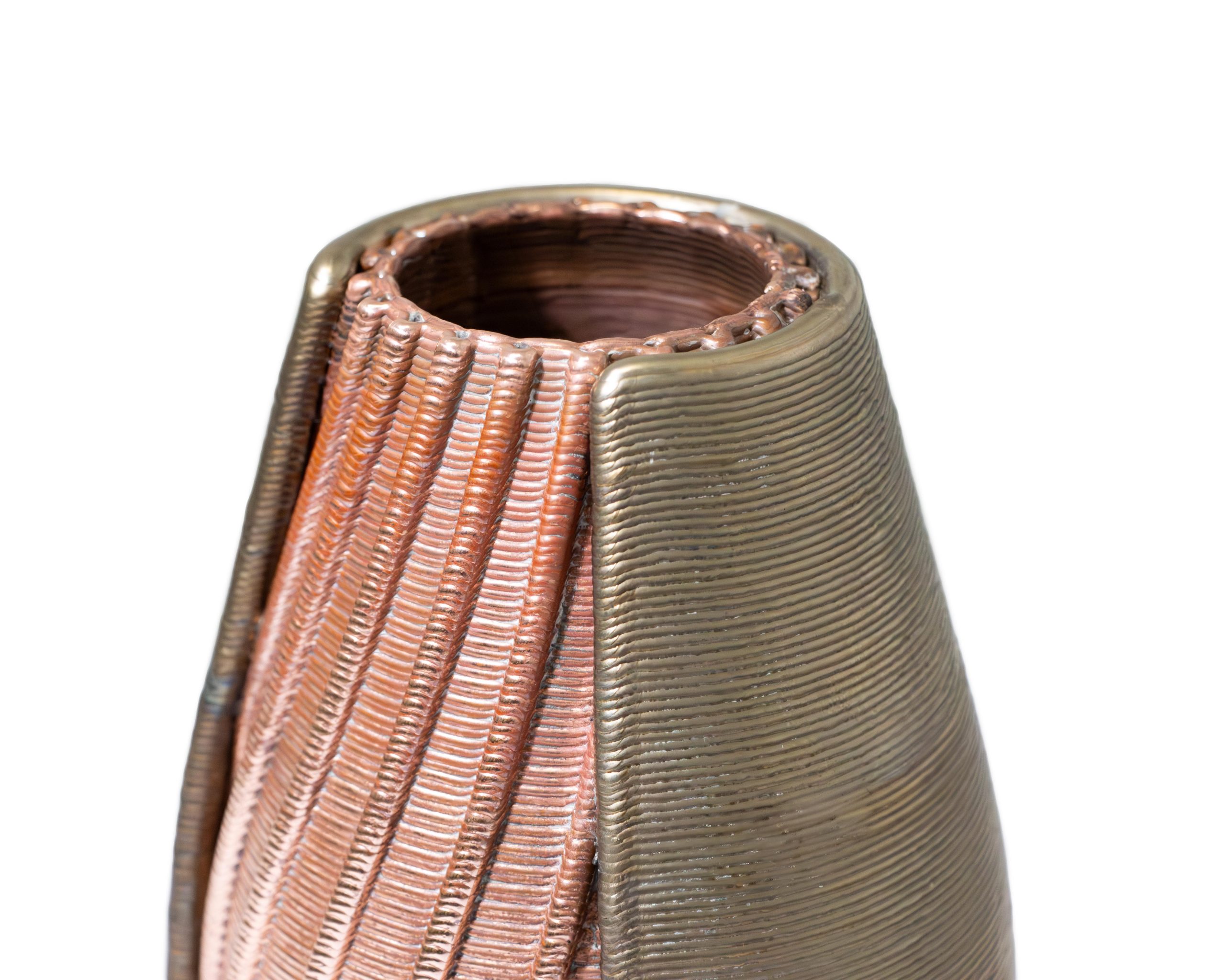
Why is this process more advantageous?
Meltio’s additive manufacturing has numerous advantages over more traditional methods and even over the most innovative methods within additive manufacturing, such as the use of powder or WAAM when manufacturing metal parts. The main advantages offered by our Meltio technology in additive manufacturing include the following:
- Freedom of design when creating all kinds of geometries, even the most complex ones that cannot be manufactured by conventional methods. In addition, fully customised parts can be manufactured, according to the customer needs. It often happens that some parts become obsolete and are no longer manufactured, but this is not a problem when it comes to manufacturing them using our technology.
- Material optimisation, improved mechanical capabilities and multi-material parts with Meltio Technology. Additive manufacturing, especially with Meltio technology, offers the possibility to improve the mechanical capabilities and optimise the material of parts. With this technology, we can manufacture multi-material parts, which provide unique properties by combining different materials. In addition, we can select which material to give to which part of the part according to its specific use. This not only allows cost savings by using less expensive materials in less critical areas but also minimises material waste thanks to Meltio’s laser wire metal deposition process.
- Reduced time to market, allowing parts to be manufactured in much less time and even parts to be manufactured in one location. This drastically reduces design cycles to the final product, making the creation of a part a matter of days rather than months.
- Complete supply chain supervision. The entire manufacturing process is controlled from start to finish. There is no longer a need to rely on external suppliers.
- Reduced total production costs by significantly reducing production steps, saving energy and material waste.
- Functional and high quality parts by allowing a high degree of control over the structure of the deposited material.
- Repair of metal parts, by being able to repair defective or worn parts with the most suitable material to reinforce the worn part of the part.
However, as mentioned above, within the DED process, there are technologies that, instead of WL-DED, use powder to create metal parts. In this process, there are several technologies that are referred to as Powder Bed Fusion and Powder DED.
TIP: To know more, read the The benefits of a Wire-based 3D Printing Process
Meltio’s range of materials
While powder technology is limited by the fact that there is no single catalogue available for the materials you want to print with, this is not the case with Meltio technology.
Meltio has developed a series of materials with the best properties and characteristics so that the part to be printed has an excellent end result. The materials that Meltio has developed are subject to continuous improvement in order to perfect existing printing processes. Likewise, we are always working to introduce new materials validated by Meltio.
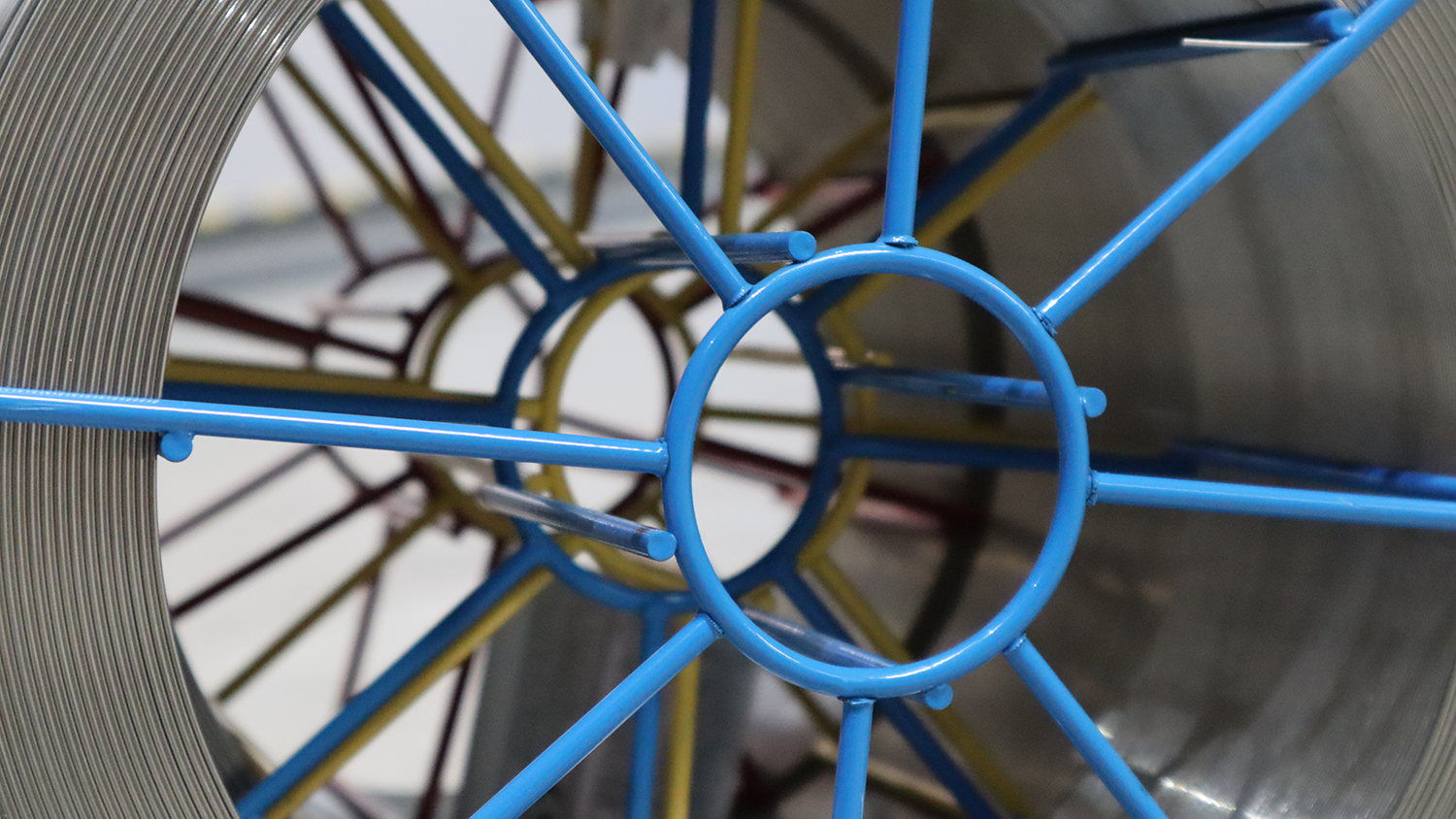
1. Materials’ developed by Meltio
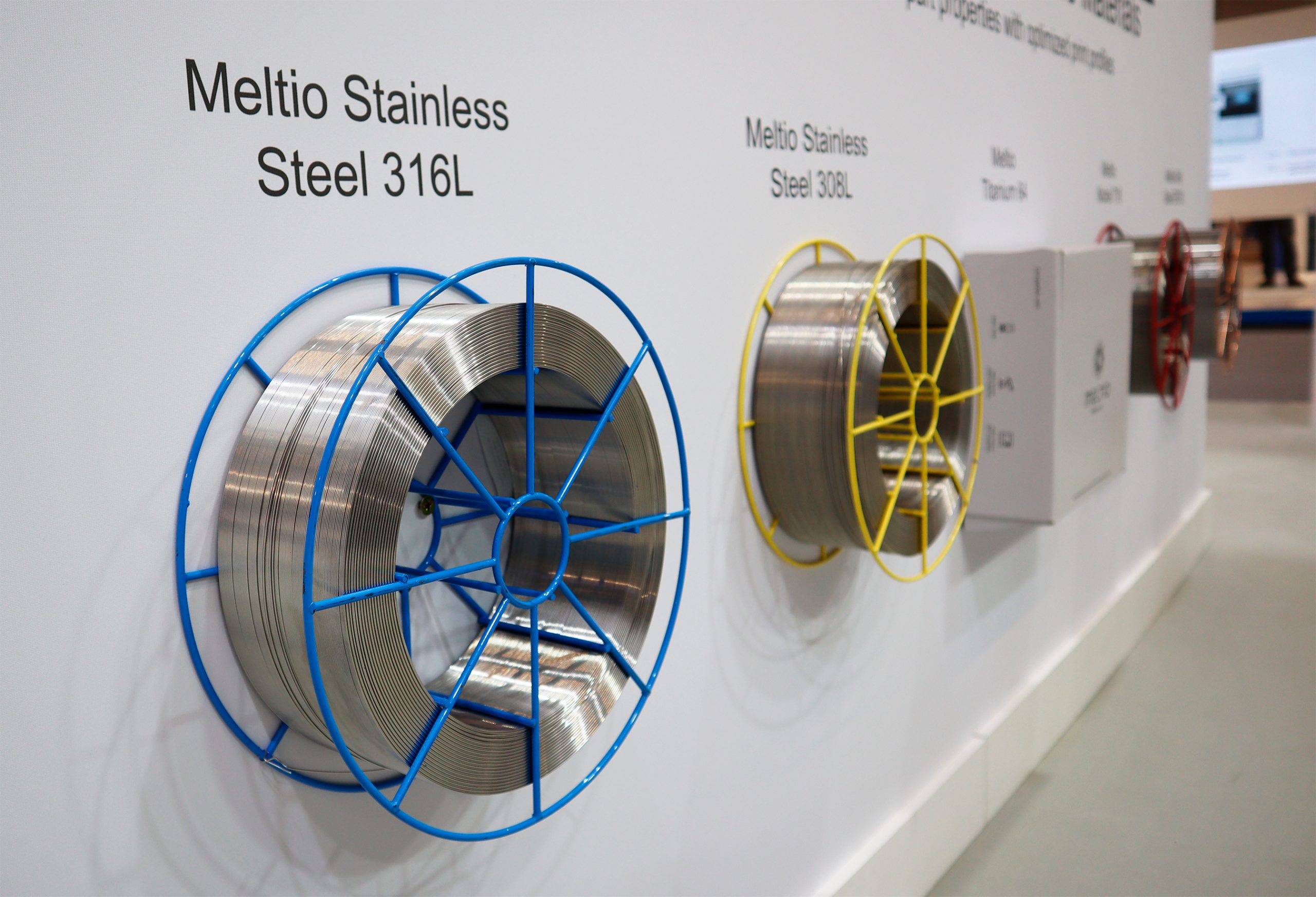
Listed below is the portfolio of materials that Meltio has developed, as they were successful during the parametrization and characterization. All the materials are divided by material family.
Austenitic Stainless Steel
Stainless Steel 316: It is characterised by its corrosion resistance and low cost. It is easily printable, highly corrosion resistant general-purpose stainless steel grade with decent mechanical properties. Found in a large variety of different industries from machinery to food processing. Abundant global availability. For instance, it could be applied to hatching components or food mixers.
Stainless Steel 308: It is characterised by its corrosion resistance and low cost. It’s a popular stainless steel with similar mechanical properties as 316L but less corrosion resistance in saline environments. Also used for repair and feature addition on 304 Stainless steel. There’s abundant global availability. For instance, it could be applied to exhaust headers.
TIP: To know more about Stainless Steel, read the Stainless Steel Guide
Nickel Alloys
Inconel 718 – Ni718: It is characterised by its corrosion resistance and high mechanical properties. Nickel 718 is a high-strength, corrosion-resistant nickel-chromium material used at -252°C to 705°C. Poor thermal conductivity, high toughness and strong work hardening tendency adversely affect it machinability, creating a very good business case for additive manufacturing. It has good global availability and excellent printability. For instance, it could be applied to Gas turbine components, high-performance exhaust components and rocket chambers.
TIP: To know more about Ni718, read the Ni718 Guide
Inconel 625 – Ni625: It is characterised by its corrosion resistance and high mechanical properties. A Ni-based superalloy with excellent mechanical properties at a wide range of temperatures. Among superalloys, Ni625 excels for its weldability, making it an ideal choice for cladding or repair of components working at high temperatures or requiring increased corrosion protection. It has good global availability and excellent printability. For instance, it could be applied to valve components and aerospace exhausts.
Invar: It is characterised by a low thermal coefficient of expansion and corrosion resistance. Nickel-Iron alloy has an extremely low thermal expansion, so it is commonly used for composite molds, cryogenics and high-precision instrumentation. It has good material availability. For instance, it could be applied to semiconductor housings and composite molds.
Titanium Alloy
Titanium Grade 5 – Ti64: It is characterised by its corrosion resistance and high mechanical properties. It has high strength, corrosion, fracture and fatigue resistance combined with low weight and biocompatibility making this the most widely used titanium alloy. The material can be printed well using Meltio systems and the supply is good. The main point of note is oxidation during processing which can be reviewed in the Meltio material datasheet. For instance, it could be applied to high-value components in aerospace, jewelry and sports equipment.
TIP: To know more about Titanium, read the Titanium Guide
Mild Steel
Mild Steel ER70S-6: It is characterised by being cheap and easy to machine. It presents low-cost, easily welded and machined general-purpose steel found in a variety of industries from Fabrication to automotive. More difficult to print than Stainless, due to its low alloy contents requiring longer build times due to poor absorption. There is abundant global availability. For instance, it could be applied to brackets and replacement of sheet metal fabrication.
Tool Steel
Tool Steel H11: It is characterised by high wear properties and high mechanical properties. It has an air-hardening chromium-based high-strength steel alloy. One of the most commonly used tool steels thanks to its outstanding impact toughness. H11 is widely used for hot tooling applications, in the manufacturing of dies and aerospace applications when tempered to a lower hardness thanks to its high strength. As printed parts are in the hardened state and require heat treatment and tempering to the required hardness. Also used in cladding / Hardfacing applications. For instance, it could be applied to hot work tooling, molding and extrusion.
Precipitation Hardening Stainless Steels
Stainless Steel 17-4PH: It is characterised by its corrosion resistance and high mechanical properties. It has a martensitic precipitation-hardened stainless steel capable of achieving high hardness and strength while offering excellent corrosion resistance. It is widely employed in the oil & gas, aerospace, energy, and defense industries. As a high-performance alloy with good global availability, 17-4PH requires a high heat input when printing leading to slower print times than other stainless steels. For instance, it could be applied to stressed mechanical parts, firearms… but typical applications include pump impellers, pipes, and valves.
2. Compatible Materials
The materials compatible with Meltio technology are listed below and divided into their corresponding families of materials.
| Martensitic Stainless Steel | Stainless Steel 410 | Stainless Steel 420 | |
| Austenitic Stainless Steel | Stainless Steel 307 | Stainless Steel 309 | |
Stainless Steel Family
| Nitronic 50 | ||
| Austenitic Ferritic SS | Super Duplex | ||
| Tool Steel | Tool Steel H12 | Tool Steel H13 | Tool Steel P20 |
| Low Allowed Carbon Steel | AISI 4130 | AISI 8260 | |
| Titanium Alloy | Ti Gr.5553 | Ti Gr.23 | |
| Cobalt Alloy | Haynes 25 | ||
| Nickel Alloy | Nitinol | Hastelloy X | Monel K500 |
| Cobalt Alloy | Stellite 6 | Haynes 25 | MP35N |
| Specialty | Tungsten Carbide | ||
| Bronze | Marine Bronze | Silicone Bronze | Bearing Bronze |
| White Metal | Babbit – NB90 | ||
| Refractory Metal | Nb | ||
| Copper-alloy | CuCrZr | ||
| Aluminum alloy | AL-6063 | AL-5158 | Scalmalloy |
| Noble Metal | White Gold | Pure Gold |
Conclusion
In conclusion, Meltio offers a wide range of materials to get the most out of Meltio technology, guaranteeing very good part properties with optimized print profiles.
Our commitment to innovation and material exploration continues to unlock new possibilities and expand the capabilities of Meltio’s technology, providing customers with diverse material options and parameterization for their additive manufacturing needs.

